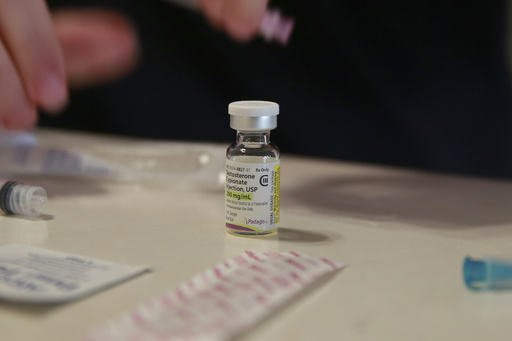
As U.S. legislators engage in discussions concerning health care for transgender minors, determining the precise number of youths obtaining gender-affirming treatments has proven challenging, allowing for inflated and misleading assertions to circulate.
Recently, a medical journal has published findings that provide the most accurate estimate to date, indicating that the actual figures are quite low. This information sheds light on current medical practices that are currently under examination by the U.S. Supreme Court.
According to a new study released on Monday, less than 1 in 1,000 American adolescents with private insurance access gender-affirming medications—such as puberty blockers or hormone treatments—within a recent five-year span.
At least 26 states have enacted laws that restrict or prohibit gender-affirming medical interventions for transgender minors, with many of these legal measures facing ongoing lawsuits. A ruling by the Supreme Court regarding a case from Tennessee is anticipated later this year. Additionally, former President Donald Trump has vowed to eliminate protections for transgender individuals.
Lead author Landon Hughes, a public health researcher at Harvard, stated, “We are not witnessing any inappropriate use of this type of care. In fact, it is certainly not occurring at the frequency that many often believe.”
The research team examined a comprehensive database of insurance claims encompassing over 5 million patients aged 8 to 17.
From 2018 to 2022, only 926 adolescents diagnosed with gender-related issues were prescribed puberty blockers, while 1,927 received hormone treatments. The results, published in JAMA Pediatrics, indicate that fewer than 0.1% of all youth in this database had access to these medications.
The study further revealed that no individuals under the age of 12 were given hormone prescriptions, showcasing that medical professionals are judicious in deciding when to initiate these kinds of therapies, according to Hughes.
“I hope that our research encourages a more measured discussion on this issue and helps the public gain a more accurate understanding of how many individuals are seeking this type of care,” he remarked.
The database factored in insurance coverage from all 50 states but did not include youths enrolled in Medicaid, the health insurance program for low-income individuals funded by both federal and state entities.
Additionally, the study did not address surgical procedures among transgender adolescents; other research indicates that these surgeries are exceedingly rare among this demographic.
It’s important to note that not all transgender youth pursue medical treatments. Dr. Scott Leibowitz, who serves as co-lead author of the adolescent standards for care for the World Professional Association for Transgender Health—a prominent organization in transgender health—explained, “Transgender youths understand their gender at various times and through different experiences.”
He added that optimal care involves engaging experts in adolescent identity development who can assist families in determining the most appropriate path for each individual young person.
Having worked in gender clinics across multiple U.S. cities, Leibowitz emphasized that this study contributes to the expanding knowledge base regarding best practices when addressing the needs of transgender and gender-diverse youth.

